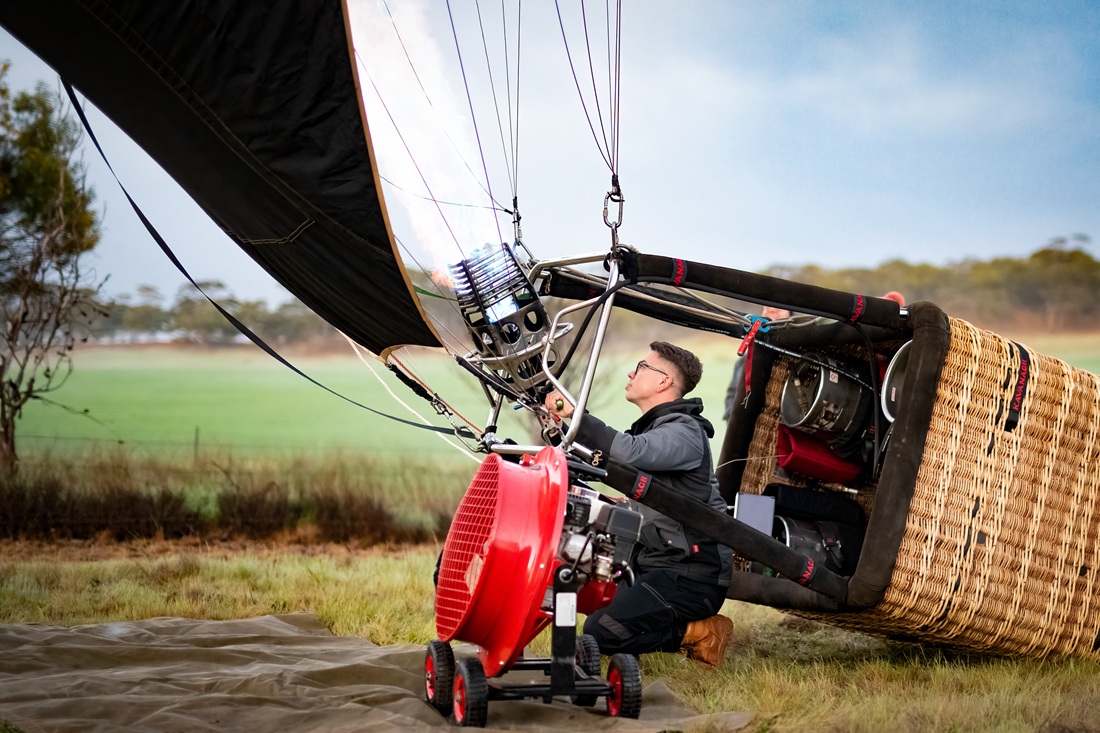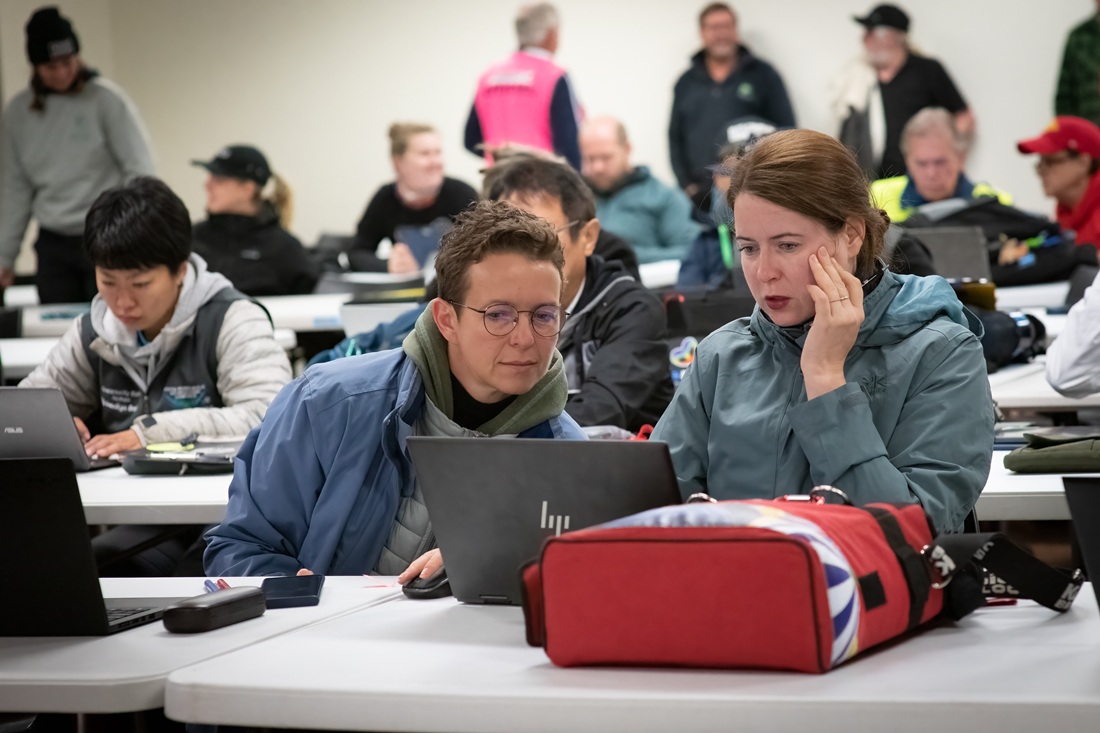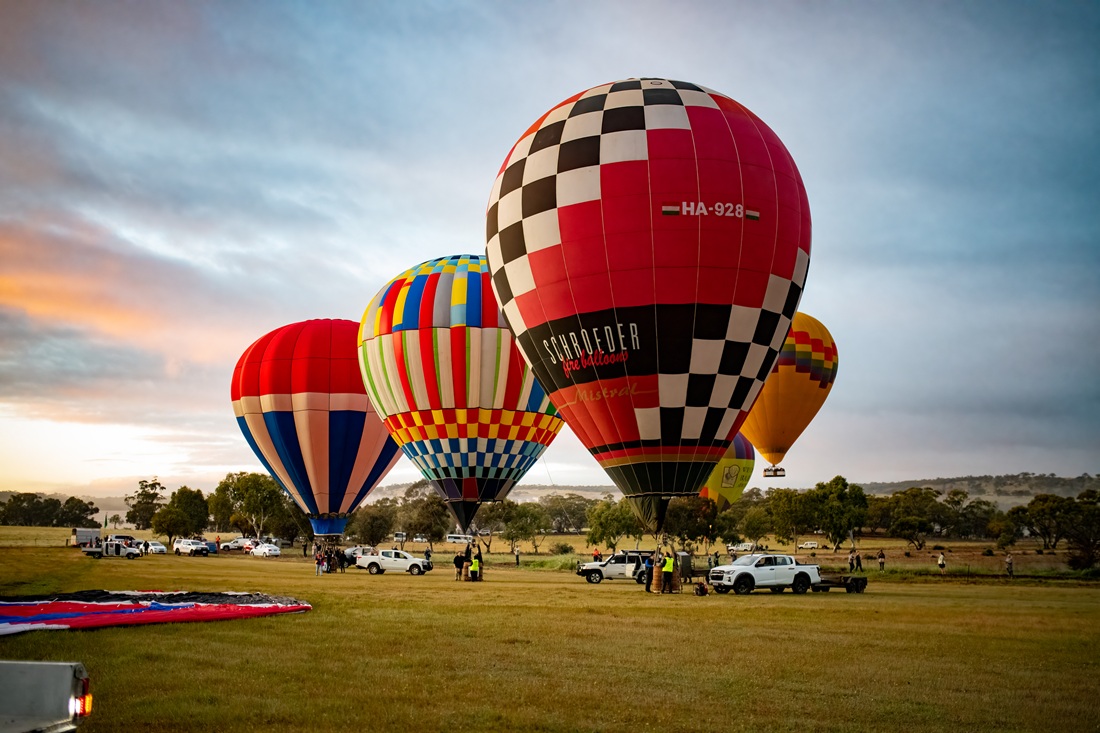Hot air balloon competitions: your 5 "floating" questions answered!
Have you been entranced by the beautiful colours and graceful flights of hot air balloons, but wondered how an aircraft with no way of steering can enter a competition? You are not alone!
National, Continental and World Hot Air Balloon Championship events bring together top pilots who battle it out to complete the challenging competition tasks and gain enough points to make it to the podium. But what makes a pilot stand out from the crowd, how does scoring work, and exactly how do you become a champion in this air sport?
In advance of the 2025 FAI European Hot Air Balloon Championship (EHABC) this August, let us unpack the details of competition ballooning and reveal the responses to five of those questions that float intriguingly above your head!
Q) What's the difference between a competition balloon and a normal passenger balloon?
A) Competition balloons are colourful - but never in novelty shapes!
The inventively shaped hot air balloons you might see at a festival – cartoon characters, plants, household objects, animals, etc. – are not suitable for the demands of a competition in which agility is essential!
To compete, pilots choose smaller volume balloons with a taller, thinner profile. Racing or competition balloons usually range from 1600 to 2200 m³ in volume, which provides manoeuvrability for quick ascents and descents. Competition baskets are also much smaller than balloons used for pleasure flights. Instead of carrying 10+ passengers, they are designed to one or two people: the pilot in command, and sometimes a co-pilot. They will be equipped with lots of navigational and communication equipment to help the pilots compete.

The small basket allows for better agility during competition and holds the pilot and sometimes a co-pilot/navigator
Filip Pettersson of Sweden has chosen to switch balloons for his first European Championships as a pilot. Ready to upgrade for this important competition, he will swap from a normal-shaped balloon “Lotta”, to “Stella”, a “heavy racer”, a balloon which some may recognise from previous European and World Championships, albeit under another pilot’s control!
As long as the registration paperwork to bring the balloon from Britain can be completed on time (Pettersson crosses his fingers!), he will pilot "Stella" through the various tasks set by the event organisers. Although he is familiar with this balloon through being a navigator, he is feeling the pressure of taking control of a new balloon for the first time, especially at this level of event. His goal for the competition is “about learning, improving and having fun”.
Q) How do you win a ballooning competition?
A) It's a test of accuracy, not speed.
By nature, a hot air balloon cannot be “steered” as it has no rudder, steering wheel or ailerons. Hot air balloon pilots therefore gain or reduce their vertical altitude to search out the wind layers moving in different directions, and reach their destinations, a skill which requires deep knowledge and experience of both weather and their aircraft.
During competition flights, tasks are set which test the pilots’ skills in reading the weather and wind conditions to navigate to a certain point. Pilots then drop a physical marker, or log an electronic mark using the Balloon Live app. This custom-made tracking system also allows the competition judges to pinpoint the pilots’ locations with accuracy and check routes, angles and markers to help define the winner of each task.
A pilot wins a competition by achieving the best overall performance: ie. having accumulated the highest total score by performing consistently across the set tasks, and avoiding penalties that will reduce their points.
Q) Is the pilot on their own in the basket?
A) Sometimes, yes. But like Formula One, there’s also a big support team behind them!
The pilot may be the captain at the helm of their vessel but there’s a whole crew on the ground helping them read the conditions and provide information to help make the decisions that will gain the most points. Supported by GPS tracking and accurate weather data, expert analysis and a competitive strategy from the team on the ground helps quick decision-making and communication.
Each decision helps the pilot in the basket to ascend, descend and find a suitable wind layer to help them arrive at their desired point. Strong leadership, experience and thorough knowledge is essential and support teams are put together carefully to cover the skills required and ensure a collaborative atmosphere.
FAI Ballooning Commission President, Claude Weber acknowledges that the most successful pilots have a strong team behind them, saying “Teamwork is certainly important in such high-level competitions. The team is there to prepare the balloon before take off. This gives the pilot more time to prepare their flight and look at possible strategy and flight options.”
He explains, “After take-off, a good team will try to get more wind information, especially at or near the target/s. The fine reading of the wind near the ground can make a big difference when approaching a target, so the team will try to be at each target to help the pilot in his approach. Most of the top pilots in Worlds and Continental championships will rely on an additional wind measuring team dedicated to measuring winds in different altitudes, locations and times.”

Concentration and planning at a pre-flight briefing
Q) What must the pilots do, to gain points?
A) To win, pilots must complete "tasks"
During the pre flight pilot briefing by the Competition Director and other Officials, the challenges are revealed. Competition Directors choose from a list of possible competition "tasks", whose scoring metrics may be time, angles, or distances. There may be more than one task per flight, and some can even be "3D"!
Here are some of the tasks which pilots could face during a hot air balloon competition:
- Pilot Declared Goal (PDG): Pilots must choose their own target before launch and aim for it. This could be on the ground, or in the airspace (ie. a “3D task”!)
- Judge Declared Goal (JDG):
A fixed target is provided. The closer the pilot gets their marker to the centre of the target, the better their score. - Hare and Hounds: (HNH)
A chase task: pilots follow a lead balloon (the "hare") and try to land, or drop a marker, as near to it as possible. - Fly On (FON):
After reaching one goal, pilots then declare and fly to a second goal mid-flight. Like the PDG, this could also be a 3D task. - Elbow (ELB):
Pilots must change direction mid-flight, keeping as close to the required angle as they can and gain points based on the accuracy of their performance. - Minimum Distance Double Drop (MDD)
Pilots must try to achieve two marks or valid track points close together in different scoring areas. - Race to Area / Fly to Area (RTA/FTA):
Pilots must arrive within in a designated area, sometimes at a specific time which makes the challenge harder.
What is it like to perform these tasks under the pressure of a competition? Balloon pilot Clément Seigeot of France, the 2024 World Champion smilingly explains, "Flying amongst the 120 best pilots on the planet is definitely anything but easy!" He has a preference for the tasks that get his heart pumping, saying, "Surprisingly, my favourite tasks are not the ones I am the best at. I perform really well on 3D tasks, like PDG or FON... We need to declare our on target with an altitude and we need to nail it virtually. But I definitely prefer a physical task like a GBM (Gordon Bennett Memmorial), where you need to drop a physical mark (marker) inside a scoring area. I'm quite bad but it provides so much adrenaline! For the EHABC, fingers crossed for some amazing GBM or MDD tasks!"
Q) How does the scoring work?
A) Each task has a max score of 1000. (But you can lose 100-500 points for a penalty!)
The winner of a task gains 1000 points, with points reducing proportionally for the runners up. For some tasks, the scoring area is within the whole flight map, so each pilot marking a target can gain points, but for other tasks, there is a Marker Measuring Area (MMA) to define point scoring.
But pilots must watch out for penalties!
The Competition Rules list the potential penalties for listed infractions. Pilots take care not to have points deducted (usually between 100-500) for making infractions. This includes things such as entering restricted airspace, not respecting time or distance limits, making an invalid mark or uploading their electronic data too late.
Results are announced, then teams can analyse their scores and put forward a query or protest within a certain time limit. Once these are dealt with by the jury, the official results are announced, followed, of course, by the medal ceremony!

Balloons begin to launch for a world championship task
At the upcoming 23rd FAI European Hot Air Balloon Championship in Wieselburg, in the Mostviertel region between Vienna and Linz known as the “Austrian Tuscany”, the competitors’ flight map will feature very few restricted areas.
Although the hosts at the Mostviertel Ballooning Club cannot yet reveal the tasks or penalties, they do give some insight into flying in the area:
“The northern Mostviertel is perfect for ballooning. Wieselburg is situated in gently rolling hills, which makes navigation topographically very manageable. In addition, there are steady altitude winds and small valleys that can be calculated very well.
To the north of Wieselburg flows the Danube River… To the south, every balloon flight offers a view of our “father mountain,” the Ötscher, surrounded by many other peaks – Wieselburg is located at the foothills of the Austrian Alps. The people in and around Wieselburg are very friendly and always happy to see hot air balloons. They are enthusiastic about it, and when you land, you might even be welcomed with a shot of schnapps!”
ARE YOU Ready to compete? HERE'S How to start IN COMPETITIVE BALLOONING…
The ballooning community is renowned for being friendly and welcoming, so if this kind of challenge sounds like something you would like to try, then jump straight in and ask a balloon pilot! All competitors have started somewhere. As the 2024 Hot Air Balloon World Champion, Clément Seigeot of France said after he gained his title: "15 years of dreams, hard work and sacrifices… I’m really grateful to all the ballooning community who gave me so much since I (was) 3 years old, you all contributed in a way or another to this success."
- Visit, or better still, volunteer as crew at a local balloon event. It’s a great way to learn about ballooning in general.
- If you are a junior, FAI Ballooning supports Youth Balloon Camps in which young people can participate to discover the joys of aviation and get hands-on experience from pilots and aviators.
- Contact your local hot air balloon club
- Follow a balloon competition and back your favourite pilots!
Follow the 23rd FAI European Hot Air Balloon Championship
- 16-23 August 2025, Wieselburg, Austria
- FAI competition website
- Event organiser's website
- FAI Facebook - for updates during the event
- FAI Instagram - for updates during the event
- See list of pilots competing
Watch this highlights video of the 2024 FAI World Hot Air Balloon Championship in Hungary for more
insight into ballooning competitions

